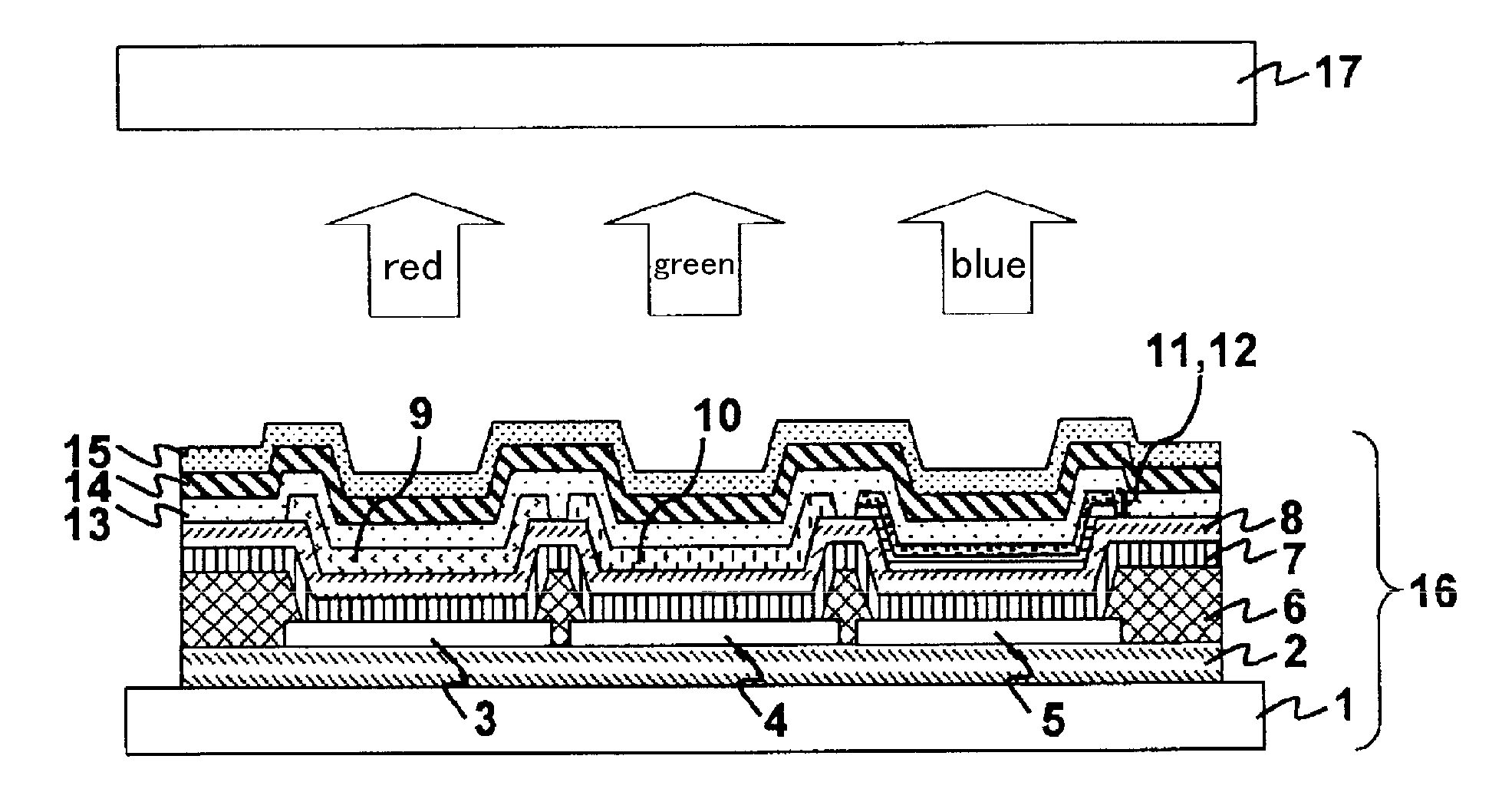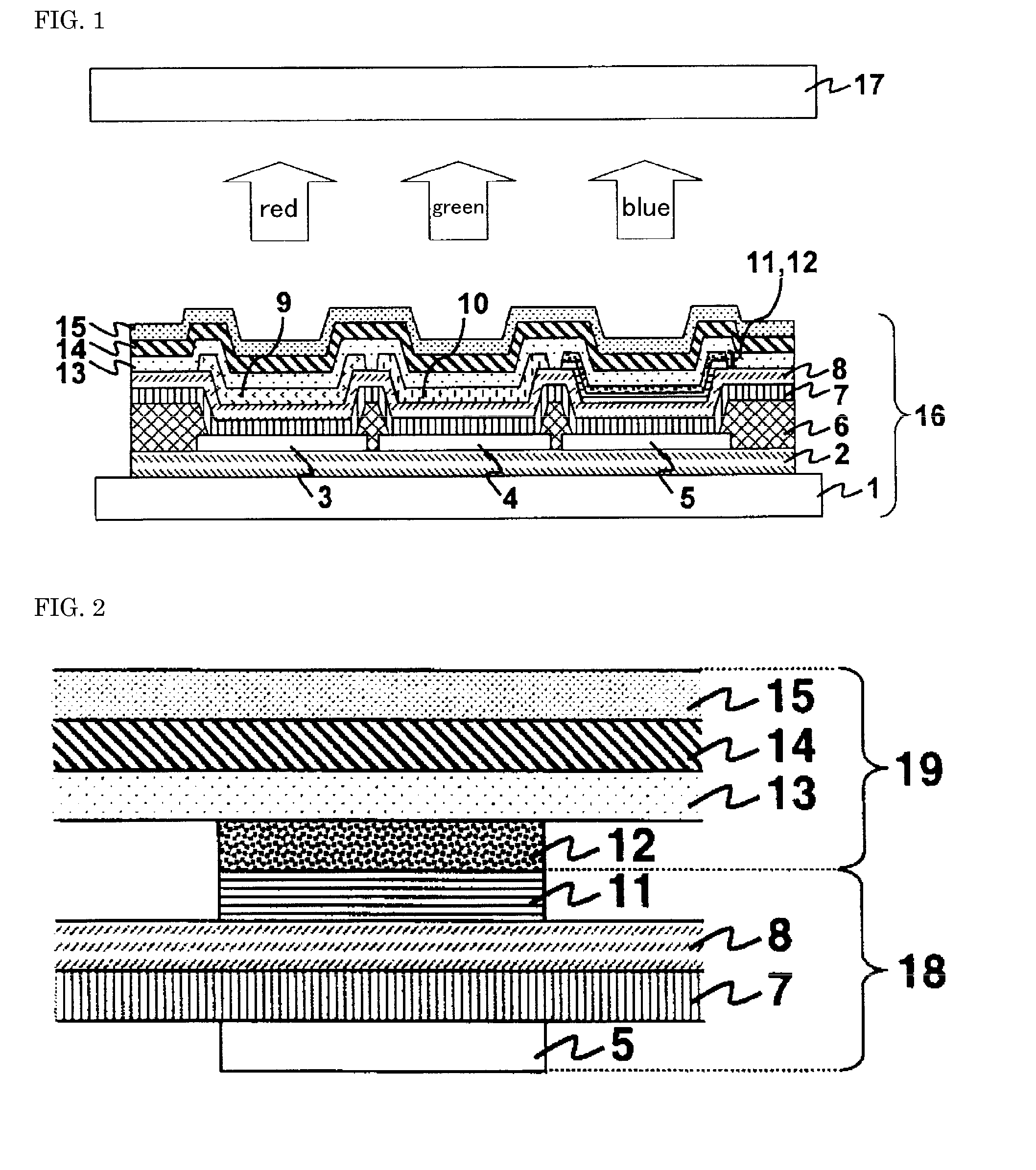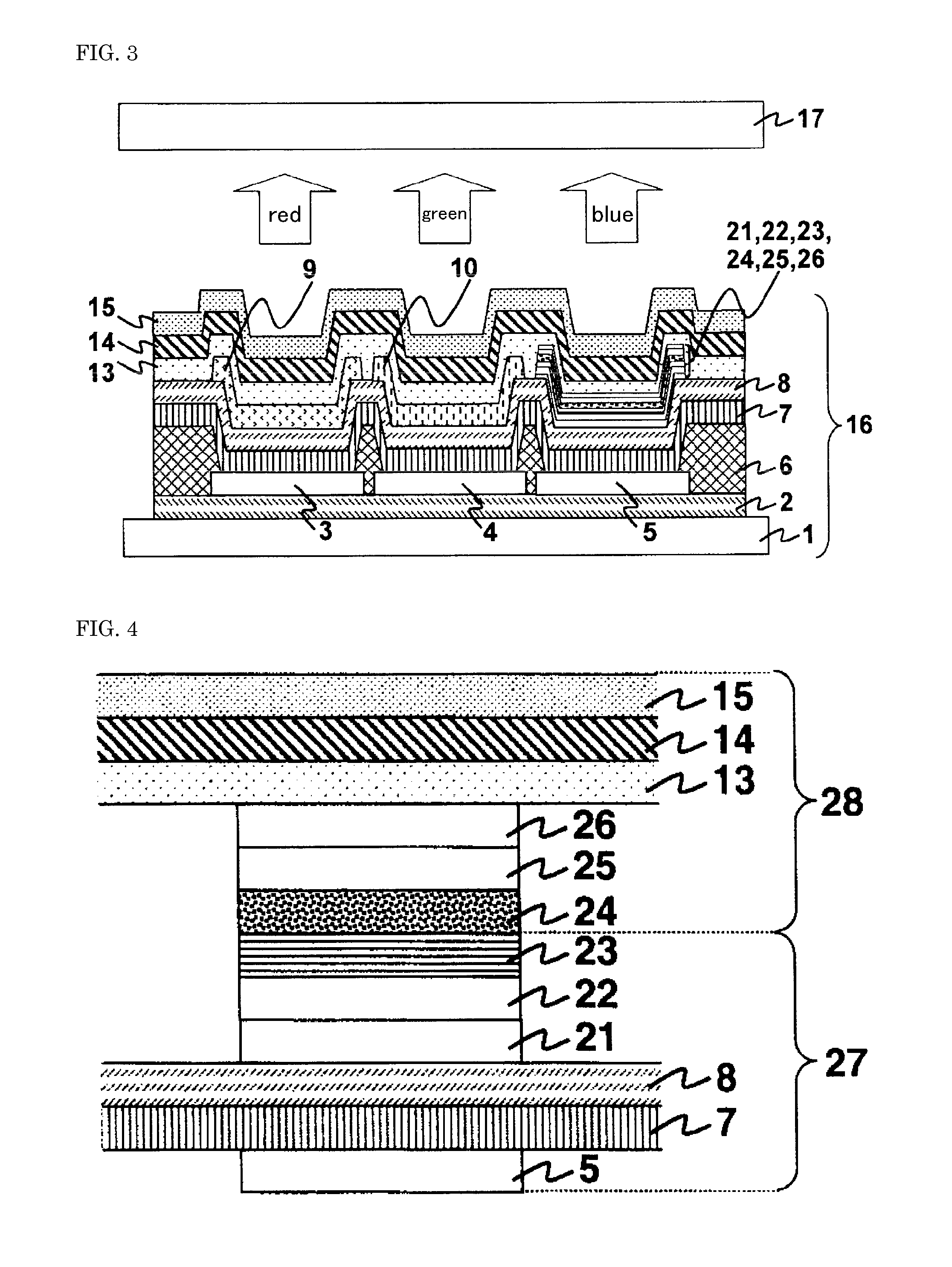Organic light-emitting display device
a technology of light-emitting display device and organic light-emitting element, which is applied in the direction of solid-state device, semiconductor device, thermoelectric device, etc., can solve the problem of prolonging the life of the devi
- Summary
- Abstract
- Description
- Claims
- Application Information
AI Technical Summary
Benefits of technology
Problems solved by technology
Method used
Image
Examples
first embodiment
[0106]The organic light-emitting display apparatuses according to embodiments of the present invention are described in reference to the drawings.
[0107]FIG. 1 is a cross sectional diagram showing a pixel in an organic light-emitting display device. In addition, FIG. 2 is a schematic cross sectional diagram showing a blue light-emitting element.
[0108]Though not shown in FIG. 1, a number of scan lines are aligned with constant intervals between the glass substrate 1 and the first layer insulating film 2, and at the same time, signal lines for transmitting image information are aligned with constant intervals in such a direction as to cross the scan lines.
[0109]That is to say, scan lines and signal lines are aligned in a grid, and the regions surrounded by scan lines and signal lines are display regions for pixels or sub-pixels.
[0110]Furthermore, a number of first current supply lines connected to the power supply are aligned on the glass substrate 1 so as to be parallel to the signal ...
second embodiment
[0142]An example of an organic light-emitting display device according to the second embodiment where the life of blue light-emitting elements can be prolonged, and the efficiency can be increased, by adding a blue light-emitting dopant to the electron transportation layer is described below.
[0143]The method for forming a first interlayer insulating film 2, lower electrodes 3 to 5, a second interlayer insulating film 6, a hole injection layer 7 and a hole transportation layer 8 on a glass substrate 1 is the same as in the first embodiment. In addition, the methods for forming a red light-emitting layer 9 in R sub-pixels, a green light-emitting layer 10 in G sub-pixels, an n doped electron transportation layer 11 and a p doped hole transportation layer 12 in B sub-pixels are also the same as in the first embodiment.
[0144]ADN and 2,5,8,11-tetra-t-butylperylene (hereinafter referred to as “TBP”) are vapor deposited together on top of a charge generating layer made up of a red light-emi...
third embodiment
[0150]An example of an organic light-emitting display device according to the third embodiment where the life of blue light-emitting elements can be prolonged, and the efficiency can be increased, by adding a blue light-emitting dopant to the hole transportation layer and the electron transportation layer is described below. The methods for forming a first interlayer insulting film 2, lower electrodes 3 to 5, a second interlayer insulating film 6 and a hole injection layer 7 on a glass substrate 1 are the same as in the first embodiment.
[0151]Next, a vapor deposited film 8 is formed on the hole injection layer 7 of α-NPD and TPB. TPB, which functions as a blue dopant, is added to the vapor deposited film 8 made of α-NPD and TPB, and thus, the efficiency in light emission is high.
[0152]A red light-emitting layer 9 is formed in the R sub-pixel region, a green light-emitting layer 10 is formed in the G sub-pixel region, and an n doped electron transportation layer 11 and a p doped hole...
PUM
 Login to View More
Login to View More Abstract
Description
Claims
Application Information
 Login to View More
Login to View More - R&D
- Intellectual Property
- Life Sciences
- Materials
- Tech Scout
- Unparalleled Data Quality
- Higher Quality Content
- 60% Fewer Hallucinations
Browse by: Latest US Patents, China's latest patents, Technical Efficacy Thesaurus, Application Domain, Technology Topic, Popular Technical Reports.
© 2025 PatSnap. All rights reserved.Legal|Privacy policy|Modern Slavery Act Transparency Statement|Sitemap|About US| Contact US: help@patsnap.com



